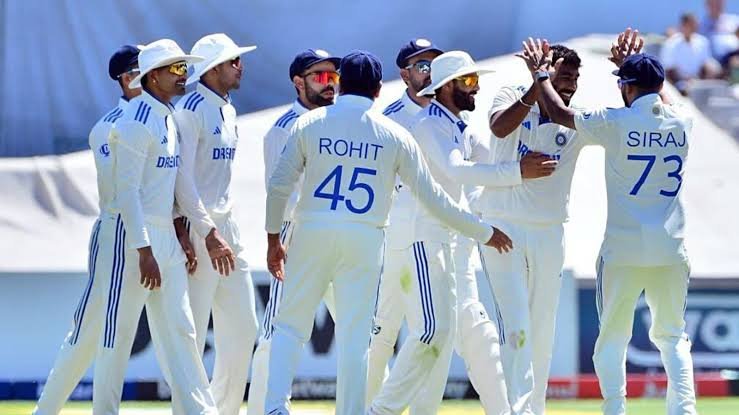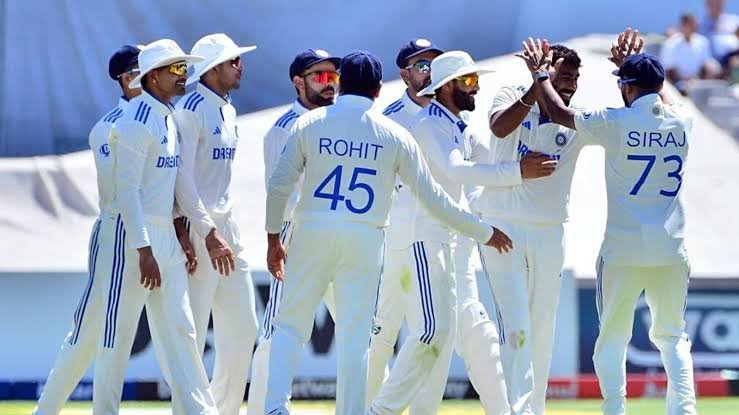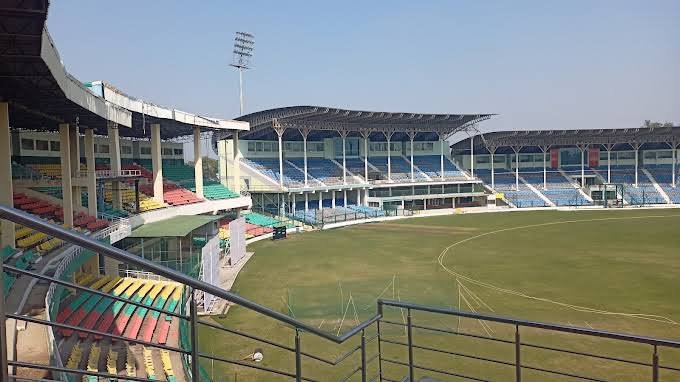Introduction
In the ever-evolving world of cricket, where stadium infrastructure and facilities play a pivotal role in hosting successful international matches, one venue that has recently been caught in the eye of a storm is the Green Park Stadium in Kanpur. The historic stadium, which has been a permanent Test venue for India, found itself at the center of controversy during the second Test between India and Bangladesh. The match witnessed two days being abandoned due to poor ground conditions despite little or no rain, leading to widespread criticism from players, fans, and even cricket pundits.

In defense of the Green Park Stadium, the vice-president of the Board of Control for Cricket in India (BCCI), Rajeev Shukla, has come forward to explain the challenges faced by the venue and the plans for its upgradation. Shukla emphasized the significance of Green Park as a heritage ground and acknowledged that while improvements are necessary, the blame for match disruptions due to rain should not fall solely on the venue. He highlighted the need for modern technology to deal with rainwater and assured that discussions are already underway to bring necessary advancements to the stadium.
A Heritage Ground in Need of Modernization
Green Park Stadium, established over 80 years ago, is one of India’s oldest and most iconic cricket venues. It has witnessed historic matches and memorable moments in Indian cricket, making it an integral part of the country’s cricketing heritage. Shukla highlighted the importance of the ground, noting its status as one of the original six permanent Test venues in India, along with Kolkata, Chennai, Delhi, Bengaluru, and Mumbai.
However, the age of the stadium has also become one of its biggest drawbacks. While cricket has evolved rapidly over the decades, with newer venues featuring cutting-edge facilities, Green Park has struggled to keep up with the demands of modern cricket. The absence of advanced drainage systems, which are now commonplace in stadiums worldwide, has been a significant issue for Green Park. This was glaringly evident during the India-Bangladesh Test, where waterlogged outfields and soggy conditions prevented play, even though the rain had subsided.
The Impact of Rain on Matches
The two-day abandonment during the second Test between India and Bangladesh raised eyebrows, as fans and commentators alike questioned the preparedness of the venue to handle such situations. While rain is a common challenge in cricket, many argued that better infrastructure, such as a state-of-the-art drainage system, could have allowed the match to proceed despite the adverse weather.
Shukla was quick to defend the venue, stating that this was the first time in 80 years that such a situation had occurred in Kanpur. He also pointed out that rain has disrupted matches at various venues around the world, and Kanpur should not be singled out for criticism. The BCCI vice-president emphasized that rain is an uncontrollable factor, and the focus should be on upgrading the stadium to mitigate such issues in the future.
The Need for Technological Upgradation
One of the key points raised by Shukla during his defense of Green Park was the lack of high-level technology when the stadium was originally built. At the time, advanced systems to deal with rainwater and drainage were not available. However, with the advent of modern technology, newer stadiums like the one in Lucknow and the upcoming venue in Varanasi are equipped with sophisticated systems that ensure minimal disruption due to rain.

Shukla acknowledged that Green Park needs similar upgrades to remain a viable venue for international cricket. He mentioned ongoing discussions with local authorities and the Uttar Pradesh Cricket Association (UPCA) to implement modern drainage and rainwater management systems. This would require digging up parts of the ground and installing new technology, which, while a challenging task, is necessary to bring the stadium up to international standards.
The MoU with the Uttar Pradesh Government
Green Park Stadium is owned by the Uttar Pradesh government, but its upkeep and maintenance are managed by the UPCA under a Memorandum of Understanding (MoU). This arrangement has led to certain bureaucratic challenges in terms of funding and implementing upgrades. However, Shukla expressed optimism that with the cooperation of the state government and the UPCA, the necessary improvements could be made in the near future.
The BCCI vice-president also stressed that the stadium holds significant sentimental value for the people of Kanpur and Indian cricket as a whole. While some have suggested that Test matches should no longer be hosted at Green Park due to its outdated infrastructure, Shukla firmly opposed such notions. He reiterated that Kanpur’s long-standing tradition as a Test venue should be preserved, and the focus should be on modernization rather than abandoning the ground altogether.
A Roadmap for Upgradation
Shukla outlined a clear roadmap for the upgradation of Green Park Stadium. The first step would involve addressing the drainage issue, which has been the primary cause of concern. Installing an advanced drainage system similar to the ones used in Lucknow and other modern venues would ensure that the ground remains playable even after heavy rains. This system would allow rainwater to be quickly drained from the outfield, preventing waterlogging and ensuring that matches can proceed without significant delays.
In addition to the drainage system, Shukla also mentioned plans to improve other aspects of the stadium’s infrastructure. These include upgrading the seating arrangements, enhancing the player facilities, and improving spectator amenities. The goal is to transform Green Park into a world-class cricket venue while preserving its historical significance.
The Importance of Preserving Heritage Venues
One of the central themes of Shukla’s defense of Green Park Stadium is the importance of preserving heritage venues in cricket. In an era where new stadiums with cutting-edge facilities are being built across the country, there is a risk that older venues like Green Park may be left behind. However, Shukla argued that heritage venues play a crucial role in maintaining the historical continuity of Indian cricket.
Venues like Green Park, which have hosted some of the most iconic moments in Indian cricket history, are more than just sports facilities. They are symbols of India’s rich cricketing legacy, and abandoning them in favor of newer stadiums would be a disservice to the sport’s history. Instead, Shukla advocated for a balanced approach that involves modernizing these venues while preserving their historical significance.
Green Park’s Legacy in Indian Cricket
Over the years, Green Park Stadium has been the backdrop for several historic matches. From memorable victories to heartbreaking losses, the stadium has witnessed it all. It has been a fortress for the Indian cricket team, hosting legendary players such as Sunil Gavaskar, Kapil Dev, Sachin Tendulkar, and Rahul Dravid. The venue has also been a favorite among cricket fans, known for its lively atmosphere and passionate crowd.
Shukla highlighted these aspects of Green Park’s legacy, stating that the ground holds a special place in the hearts of both players and fans. While modernizing the stadium is essential, it is equally important to ensure that the venue continues to serve as a reminder of India’s cricketing heritage.
The Future of Test Cricket at Green Park
Despite the criticism surrounding the second Test between India and Bangladesh, Shukla remains optimistic about the future of Test cricket at Green Park. He reiterated that the BCCI is committed to preserving the venue’s status as a permanent Test center and assured that efforts are underway to address the issues that led to the recent match disruptions.

The BCCI vice-president also expressed confidence that with the planned upgrades, Green Park would continue to be a top venue for international cricket. He emphasized that once the necessary infrastructure improvements are in place, the stadium will be able to host matches without the risk of weather-related disruptions.
Conclusion
Rajeev Shukla’s defense of Green Park Stadium highlights the delicate balance between preserving India’s cricketing heritage and meeting the demands of modern-day international cricket. While the stadium has faced criticism for its outdated infrastructure, there is no denying its historical significance in Indian cricket. The BCCI, along with the UPCA and the Uttar Pradesh government, is committed to upgrading the stadium to ensure that it remains a viable venue for international matches.
As plans for modernization move forward, Green Park’s future as a permanent Test center looks promising. With the implementation of advanced drainage systems and other infrastructure improvements, the stadium is set to reclaim its status as one of India’s premier cricket venues. For now, Rajeev Shukla’s defense of the venue serves as a reminder that heritage and modernization can coexist in the world of sports, ensuring that Green Park continues to be a cherished part of India’s cricketing history.







